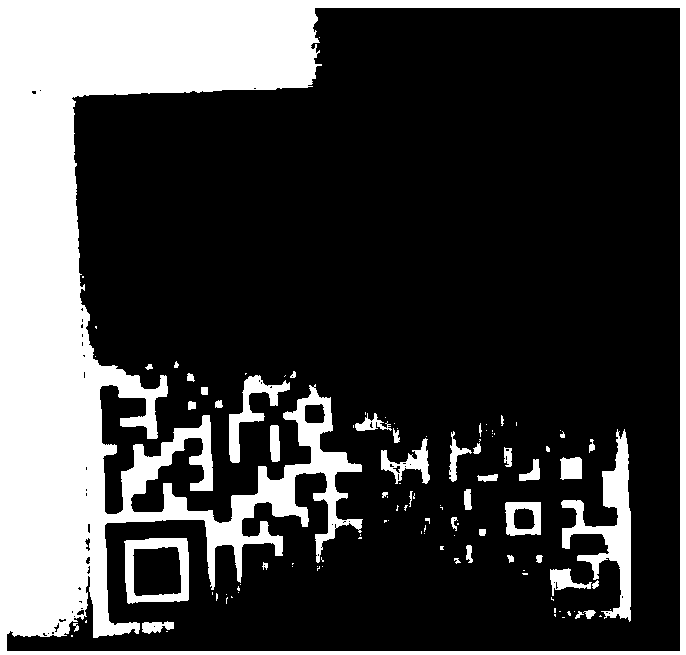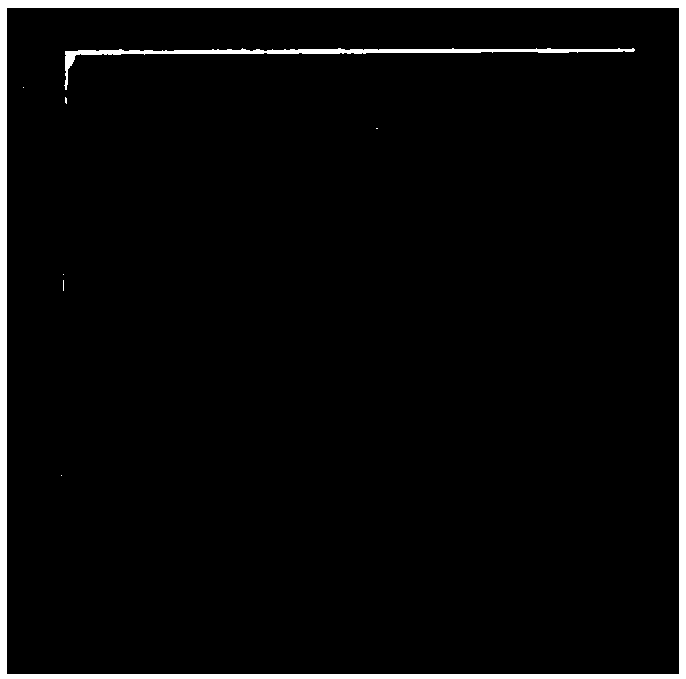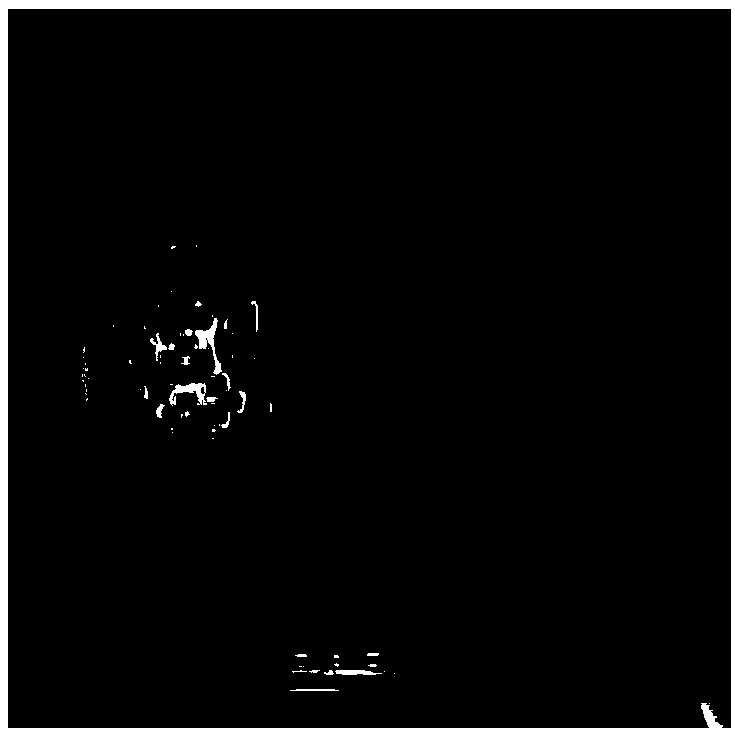Preparation method of long-service-life two-dimensional code label for outdoor atmospheric environment
A two-dimensional code label, atmospheric environment technology, applied in the field of label making, to achieve the effects of good weather resistance, improved service life and high production efficiency
- Summary
- Abstract
- Description
- Claims
- Application Information
AI Technical Summary
Problems solved by technology
Method used
Image
Examples
Embodiment 1
[0020] Select 304 stainless steel, use laser engraving technology (laser repetition frequency is 20 kHz, engraving line speed is 400 mm / s) to process the two-dimensional code pattern on the surface of the stainless steel, and then apply UV metal ink on the two-dimensional code pattern part, ink After curing, before coating the varnish, the surface of the two-dimensional code label is decontaminated and degreased, pickled, washed with water and dried. L Na 2 CO 3 , soaked at room temperature for 5 minutes; the pickling solution is 40g / L HCl, 160g / L HNO 3 , soaked at room temperature for 10 minutes, washed with distilled water, dried quickly with a hair dryer, and finally coated a layer of high weather resistance and corrosion resistance modified acrylic polyurethane varnish with a thickness of 100 μm on the entire label surface. The modification method is to add 1wt% benzene And triazole. The appearance of the two-dimensional code label is as follows figure 1 As shown, the ...
Embodiment 2
[0022] Choose 316L stainless steel, use laser engraving technology (laser repetition frequency is 30 kHz, engraving line speed is 300 mm / s) to process the QR code pattern on the surface of the stainless steel, and then apply UV special metal ink on the QR code pattern part, After the ink is cured, the surface of the two-dimensional code label is decontaminated and degreased, pickled, washed with water and then dried. The decontamination is washed with absolute ethanol, and the degreasing solution is 50g / L NaOH, 40g / L Na 2 CO 3 , soaked at room temperature for 10 minutes; pickling solution is 50g / L HCl, 140g / L HNO 3 , Soak at room temperature for 5 minutes, rinse with distilled water and dry quickly with a hair dryer. Finally, a layer of high weather resistance and corrosion resistance modified fluorocarbon varnish with a thickness of 80 μm is coated on the entire label surface. The modification method is to add 1wt% sodium tripolyphosphate and 1wt% nano TiO 2 , the QR code...
Embodiment 3
[0024] Choose 304 stainless steel, use laser engraving technology (laser repetition frequency is 25 kHz, engraving line speed is 450 mm / s) to process the QR code pattern on the surface of the stainless steel, and then apply UV photosensitive ink on the QR code pattern part, ink After curing, before coating the varnish, the surface of the two-dimensional code label is decontaminated and degreased, pickled, washed with water and then dried. The decontamination is washed with absolute ethanol, and the oil removal solution is 60g / L NaOH, 30g / L L Na 2 CO 3 , soaked at room temperature for 8 minutes; the pickling solution is 60g / L HCl, 150g / L HNO 3 , Soak for 8 minutes at room temperature, rinse with distilled water and dry quickly with a hair dryer. Finally, a layer of highly weather-resistant and corrosion-resistant modified silicone varnish with a thickness of 75 μm is coated on the entire label surface. The modification method is to add 2wt% ZnO and 1wt% epoxy resin microcapsu...
PUM
| Property | Measurement | Unit |
|---|---|---|
| Thickness | aaaaa | aaaaa |
| Thickness | aaaaa | aaaaa |
| Thickness | aaaaa | aaaaa |
Abstract
Description
Claims
Application Information
 Login to View More
Login to View More - R&D
- Intellectual Property
- Life Sciences
- Materials
- Tech Scout
- Unparalleled Data Quality
- Higher Quality Content
- 60% Fewer Hallucinations
Browse by: Latest US Patents, China's latest patents, Technical Efficacy Thesaurus, Application Domain, Technology Topic, Popular Technical Reports.
© 2025 PatSnap. All rights reserved.Legal|Privacy policy|Modern Slavery Act Transparency Statement|Sitemap|About US| Contact US: help@patsnap.com



